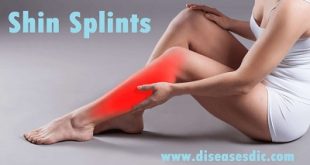Definition
Bakers Cyst is the type of cyst filled with fluid and causes a bulge and feeling of tightness just behind your knees. It accompanies severe pain which worsens gradually when you fully flex or extend the knee or when you are active.
Also called popliteal cyst, Baker’s Cyst is basically caused due to knee joint conditions like cartilage tear or arthritis. These are the knee joint conditions that cause the knee to create excessive fluid and this leads to Baker’s Cyst. In most of the cases, Baker’s Cyst also causes swelling in the knee area and it makes movement challenging and complicated. Treatment is available for curing the underlying cause which provides relief from Baker’s Cyst.
Causes of Bakers Cyst
There are two different ways in which a Baker’s cyst can form:
Primary or Idiopathic Baker’s Cyst
- This type of Baker’s cyst is formed which forms when synovial fluid from within the joint seeps into the popliteal bursa. The connection between the knee joint and the popliteal bursa causes the cyst to occur.
- This type of cyst is also known as an idiopathic Baker’s cyst. It develops at the back of a healthy knee joint and is mostly observed in younger adults and children.
Secondary Baker’s Cyst
- In the case of a secondary Baker’s cyst an underlying problem like osteoarthritis or tear in the meniscal cartilage that protects the knee joint causes the cyst to form. One of these underlying problems increases the production of synovial fluid inside the knee joint.
- This causes an elevation in pressure on the joint as a result of which the joint capsule stretches and bulges out into the popliteal bursa. As a result of this, a Baker’s cyst filled with synovial fluid is formed.
Risk factors of Bakers Cyst
You may be more likely to get a Baker cyst if you have other problems of the knee joint, such as:
- Osteoarthritis of the knee
- Rheumatoid arthritis of the knee
- Tearing of the pads of cartilage (menisci) inside the knee
- Infectious arthritis
Bakers Cyst symptoms
Often a Baker’s cyst causes no pain. When symptoms occur, they may include:
- Tightness or stiffness behind the knee.
- Swelling behind the knee that may get worse when you stand.
- Slight pain behind the knee and into the upper calf. You are most likely to feel this when you bend your knee or straighten it all the way.
Sometimes the pocket of fluid behind the knee can tear open and drain into the tissues of the lower leg. This can cause swelling and redness in that part of the leg.
Bakers Cyst complications
Recognized complications include:
Dissection: The cyst usually dissects inferomedially but can dissect proximally, anteriorly, intermuscularly or intramuscularly
Rupture: Leaking of cyst fluid into the popliteal fossa, between fascial planes and surrounding the hamstrings and medial gastrocnemius muscles; moreover, there is edema of the soft tissue and irregularity of the cyst wall
Compression: of the popliteal vessels and tibial nerve
Compartment syndrome: Can be either anterior or posterior
Diagnosis and tests
You need a professional medical exam to diagnose a Baker’s cyst. Here are the ways a doctor diagnoses a Baker’s cyst:
Taking a medical history: This will include information on the previous injury to the knee.
X-ray: You will not see the lump through the X-ray, but it will help determine if there is arthritis present in the knee. This can be the cause of Baker’s cyst.
Magnetic resonance imaging (MRI) scans: An MRI uses magnetic waves instead of X-rays to show images.
Ultrasound test: Ultrasound uses sound waves to determine if the lump is solid or filled with fluid
Treatment
Most often, Baker’s cyst does not require treatment and may disappear on its own. However, if the cyst is large and causes a lot of pain, the following treatments may be performed:
Medications: Your doctor injects corticosteroid medications into your knee to reduce pain. However, this doesn’t always prevent the reoccurrence of the cyst.
Fluid drainage: Fluid from your knee is drained using a needle that is guided by ultrasound. Steroid injections sometimes follow fluid drainage to reduce inflammation and pain.
Fluid drainage from bakers cyst
Physical therapy: Your doctor may suggest the application of ice and a compression wrap or crutches to help reduce the pain and swelling. He/she may also include strengthening and range-of-motion exercises for the muscles around the knee.
Physical therapy
Surgery: Your doctor may treat the underlying cause rather than the condition itself. If a cartilage tear is causing the overproduction of synovial fluid, surgery may be determined to repair the cartilage.
Depending on your condition, your doctor will determine the best treatment that will help alleviate your symptoms of Baker’s cyst.
Lifestyle and home remedies
If your doctor determines that arthritis is causing the cyst, he or she may advise you to take some or all of the following steps:
Follow the R.I.C.E. principles: These letters stand for rest, ice, compression and elevation. Rest your leg. Ice your knee. Compress your knee with a wrap, sleeve or brace. And elevate your leg when possible, especially at night.
Try over-the-counter pain-relieving medications: Drugs such as ibuprofen (Advil, Motrin IB, others), naproxen sodium (Aleve, others), acetaminophen (Tylenol, others) and aspirin can help relieve pain. Follow the dosing instructions on the package. Don’t take more than the recommended dosage.
Reduce your physical activity: Doing so will reduce irritation of your knee joint. Your doctor can offer you guidance on how long you need to reduce your activity levels, and he or she may be able to suggest alternative forms of exercise you can do in the meantime.
Prevention of Bakers Cyst
Knee joints are susceptible to injury during sporting activities. Preventing knee injuries from occurring can reduce the risk of a Baker’s cyst developing in the first place or coming back.
Things you can do to prevent knee injuries include:
- Warming up and cooling down before and after exercising or playing sports
- Wearing supportive footwear
- Trying to turn on the balls of your feet, rather than through your knees.
If you injure your knee, stop your activity immediately, apply ice packs to treat the swelling and seek medical advice.
 Diseases Treatments Dictionary This is complete solution to read all diseases treatments Which covers Prevention, Causes, Symptoms, Medical Terms, Drugs, Prescription, Natural Remedies with cures and Treatments. Most of the common diseases were listed in names, split with categories.
Diseases Treatments Dictionary This is complete solution to read all diseases treatments Which covers Prevention, Causes, Symptoms, Medical Terms, Drugs, Prescription, Natural Remedies with cures and Treatments. Most of the common diseases were listed in names, split with categories.








I have a growth growing on my breast….. is it cyst or it’s just normal?
You may not know the type of tissue growing in your breast unless or until diagnosed using a mammogram. Hence we strongly recommend you to contact a doctor for precise diagnosis.
Hello,good day! My name is Jeanne from Philippines,48 yrs of age,Just wanna ask about my knees,its paining me everyday and night,the joints of my knees. Its been more than 2 months,I took some medecines like cataflam but still there is pain.Pls advise what to do? And what kind of medicine shall i take.Thank u and waiting for your quick response. Jeanne
The symptoms you’re experiencing might be due to rheumatoid arthritis. It is better to get diagnosed properly from best orthopaedist.
I suffering with this, my knee is swelling at back and till the front and makes difficult to move
Kindly follow the treatment mentioned here and also get advice from doctor for proper prescription of the drug.
I feel pain at my knee (within) and is radiating to my right testicle . help me out
Experiencing pain in the knee radiating to the right testicle can have various underlying causes, including nerve compression, musculoskeletal issues, or referred pain from the hip or pelvis. It’s crucial to consult with a healthcare professional for a comprehensive evaluation, including a detailed medical history and physical examination. Diagnostic tests such as imaging studies may be recommended to identify the root cause, allowing for an accurate diagnosis and the development of an appropriate treatment plan tailored to your specific health needs. Seek prompt medical attention for a thorough assessment of your symptoms.